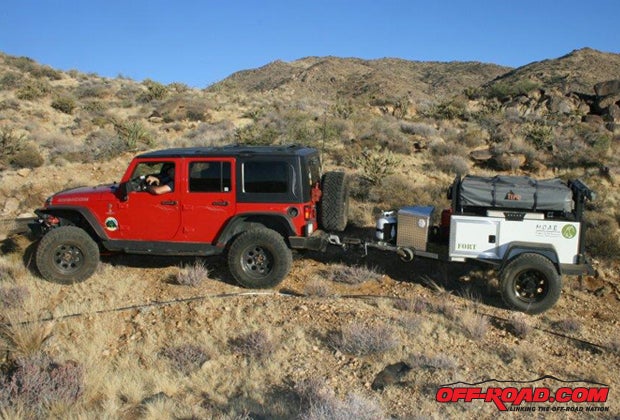
Have you ever thought about building your own camping trailer? How big does it need to be? Whatís the optimum design? What equipment does it need to carry? Should the lug nuts match your Jeep? How much should it weigh, and how much weight should it carry? Iíve thought about this often.
So have Rick Russek and Ron Bernaud, owners of Bivouac Camping Trailersís owners, and this is readily apparent when you examine their products. This excitement about adventure off-road trailers is exemplified in the M.O.A.B. trailer, which features a unique design that is both different and innovative. For the M.O.A.B., or Mother Of All Bivouacs, Rick and Ron wanted two things when they came up with the name: a cool, easily remembered moniker and a reference to Moab, Utah.
The M.O.A.B. Fort is an unusual utility trailer with an inside storage capacity of 19.7 cubic feet. It is equipped with a cargo rack with the strength to carry canoes, kayaks, or mountain bikes that also protects the rooftop tent (similar to a roll bar in a Jeep). The Fort is completely self-containedówith the exception of a toilet, though a Porta Potty can be added as an option for $159óand offers all the amenities of a larger travel trailer, in a smaller, lighter, more affordable package. The trailer is configured with the Tepui rooftop tent with an optional annex, which gives the occupants stand-up dressing capability, the Fort can accommodate up to five people comfortably. Although we didnít set up the annex ($162)óit zips around the bottom of the tent platform, and itís carried in the Fortís storage compartment for easy and quick attached.
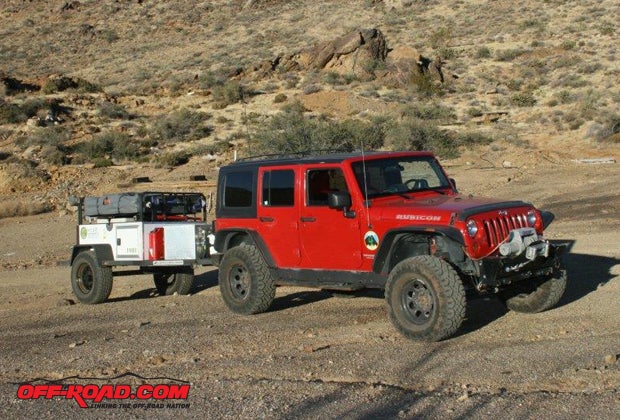
Testing the Fortís comforts were one of my sons and one of my grandsons. My son is 6 feet 4 inches and about 250 pounds; my grandson, although heís just 14, is about 5 feet 9 inches and somewhere around 140 poundsóboth ends of the spectrum. Both reported they were very comfortable on the tentís included 2-inch foam mattress, with plenty of room for personal effects and additional people (if more people needed shelter).
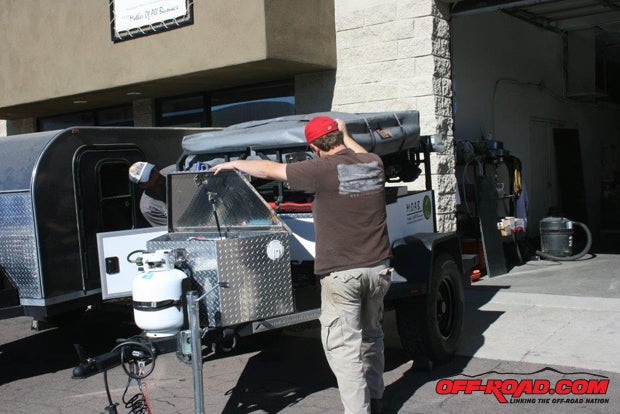
According to my son, all of the Fortís amenitiesóincluding the galleyówere well thought-out and located very conveniently. He did mention that the optional galley awning ($394) would be a great idea if you planned on camping where dew (like Pismo Beach) or rain (in the great Northwest) could be a problem. Likewise the annex, if youíd enjoy stand-up dressing and having a Porta Potty readily at hand (the ladder would actually be inside the annex, so late-night visits to the facilities wouldnít be a problem), would be an excellent idea.
The M.O.A.B. Fort is 10 feet-6 inches long, 6 feet wide, and 4 feet-9 inches high. Its enclosed storage space totals 19.7 cubic feet, and the standard aluminum front box provides another 6.7 cubic feet of space. Depending on what options are included in the Fortís package, it weighs 1,250 to 1,675 pounds. The trailerís frame is black powder-coated tube steel, and the 3,500-pound torsion axle is de-rated down to 2,500 pounds for more flex and smoother riding off the highway. The Fort comes equipped with 15-inch aluminum wheels that are 9-1/2 inches wide encircled by 31-inch tires, which gives the trailer 16 inches of ground clearance; 33-inch tires are available with larger wheels for $455; a 2-inch body lift ($215) is required with the larger wheels and tires and you can upgrade the shock absorbers for another $215. If you want the trailerís hubs to match the same lug pattern as your Jeep, itíll cost you an additional $160. The Fort also comes with a 2-inch coupler and a 2-inch receiver at no additional charge, but if you want a lunar ring hitch, itíll cost $35 (however youíll need a pintle hook on the Jeep); while a Max Coupler articulating tow hitch will run you $250.
The trailer we tested costs about $13,000. It is a M.O.A.B. Fort package D, which retails for $10,995 and then includes the following options: rear awning, larger tires, BBQ grill, and electric tent lift, to name a few.
CONTACT
Bivouac Camping Trailers, LLC.
21628 N. Central Ave, Suite 6
Phoenix, AZ 85024
(602) 332-9714
www.moabaz.com

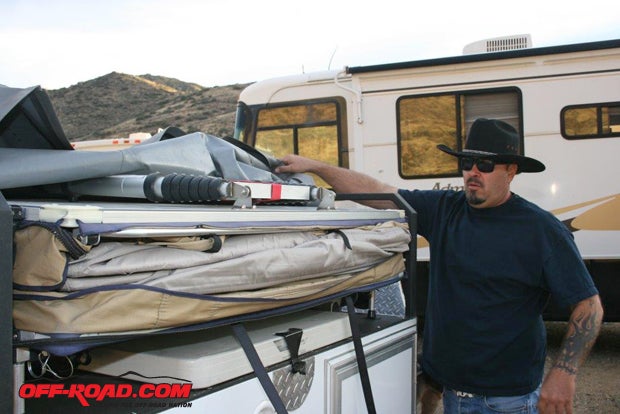
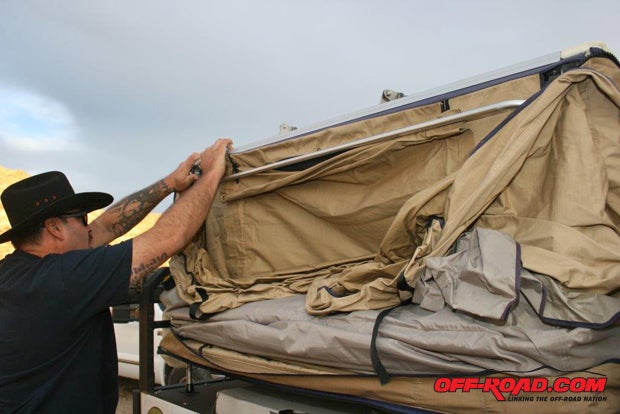
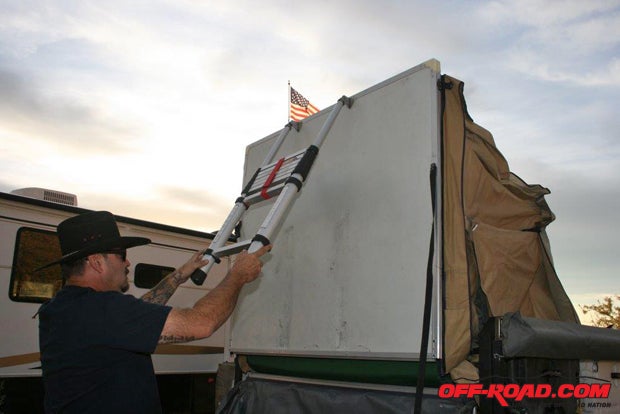
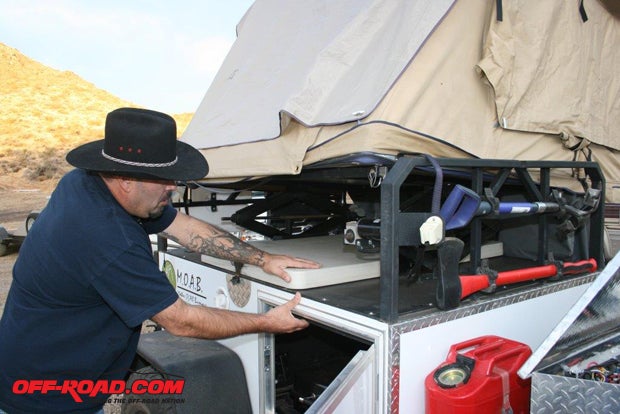
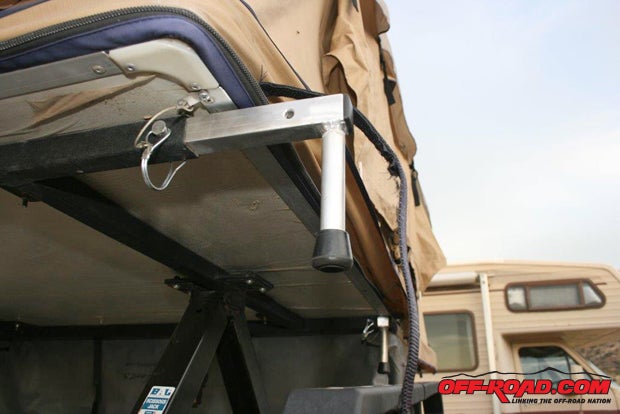
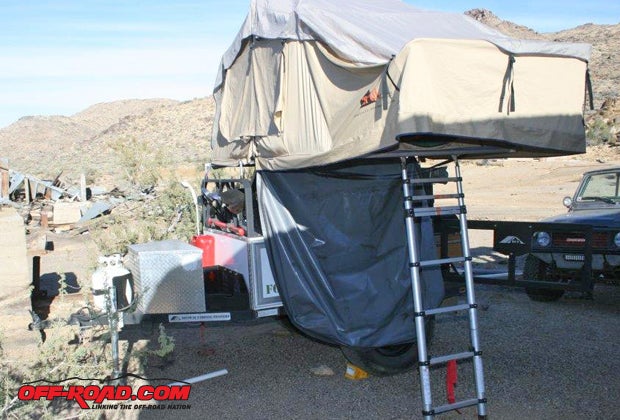
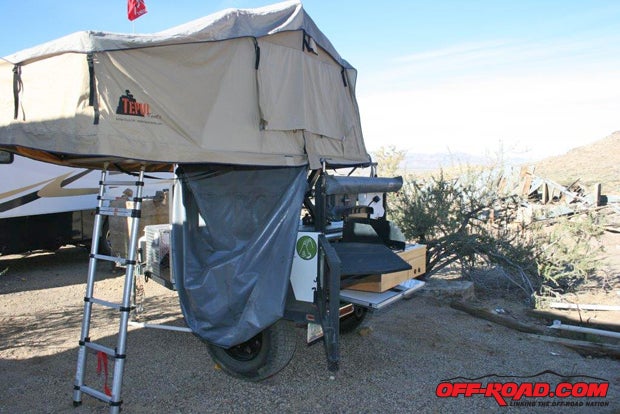
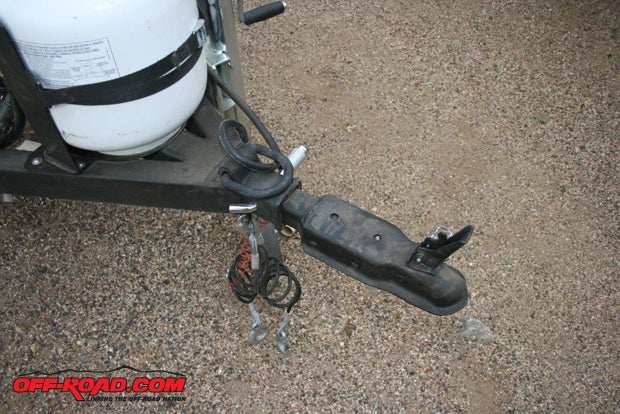
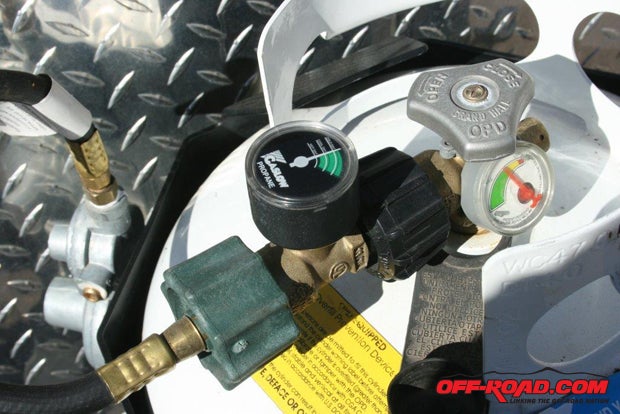


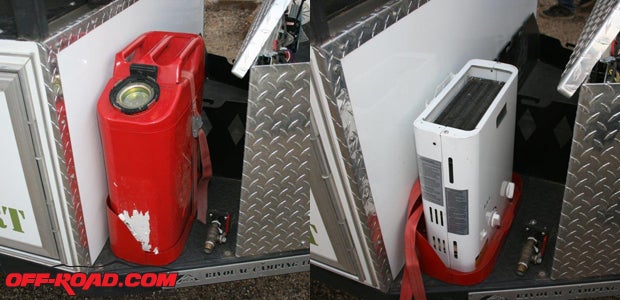

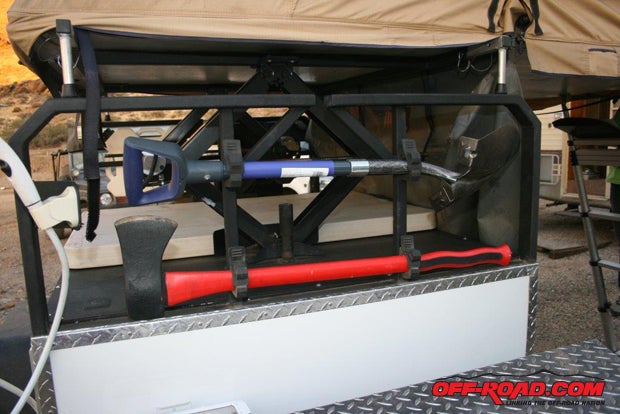


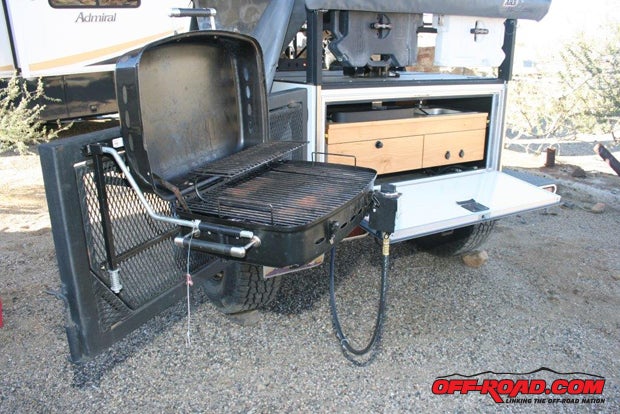
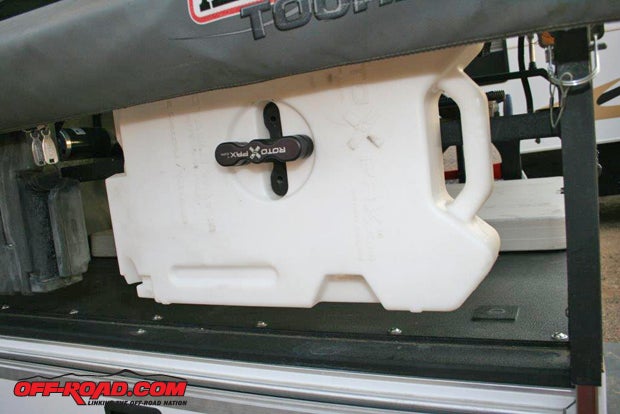
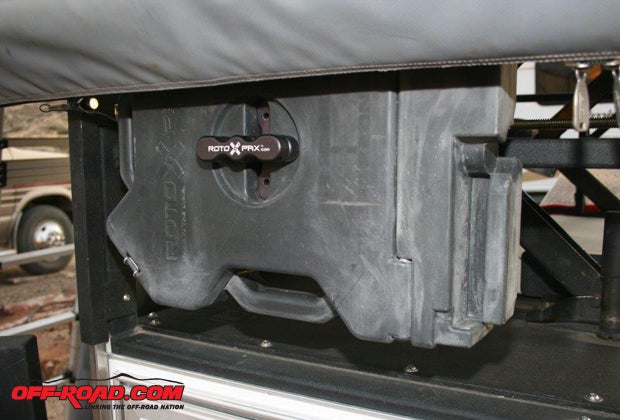

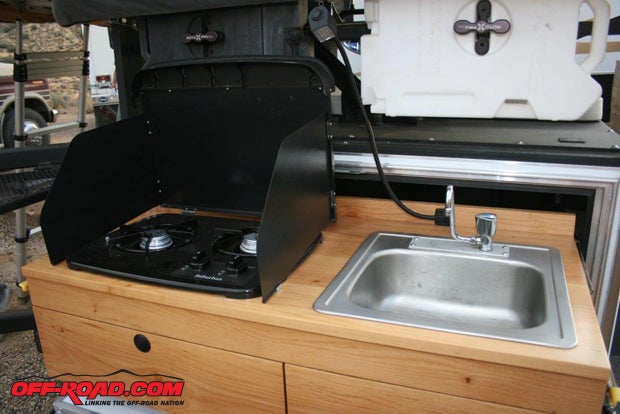
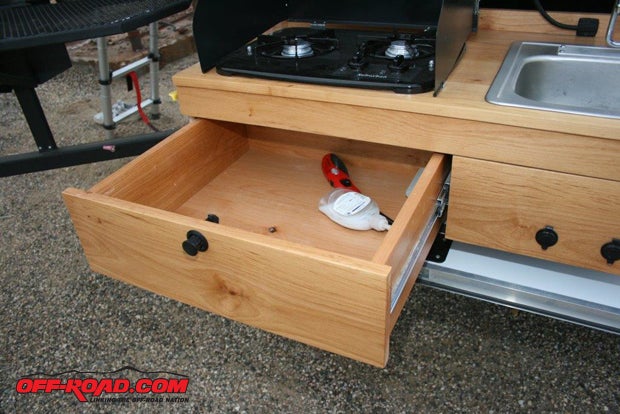
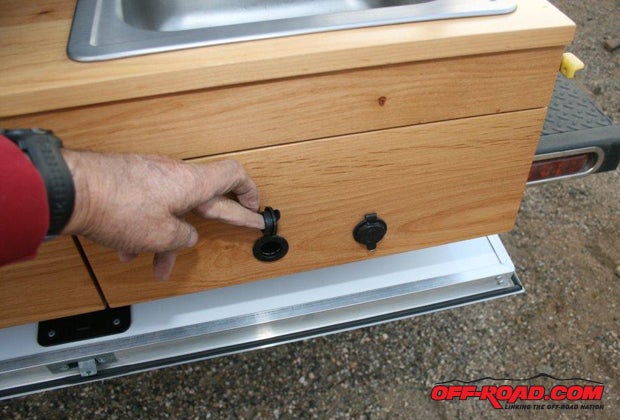
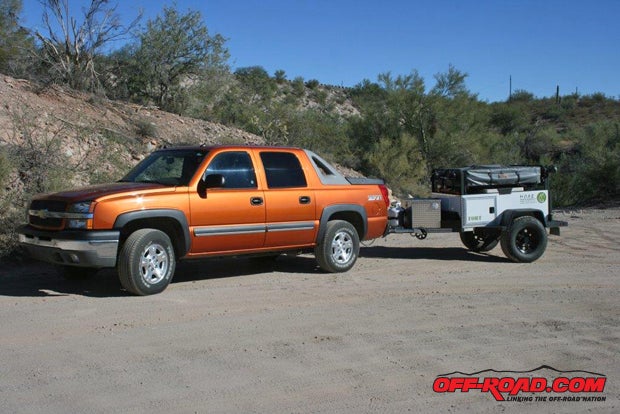



 Your Privacy Choices
Your Privacy Choices